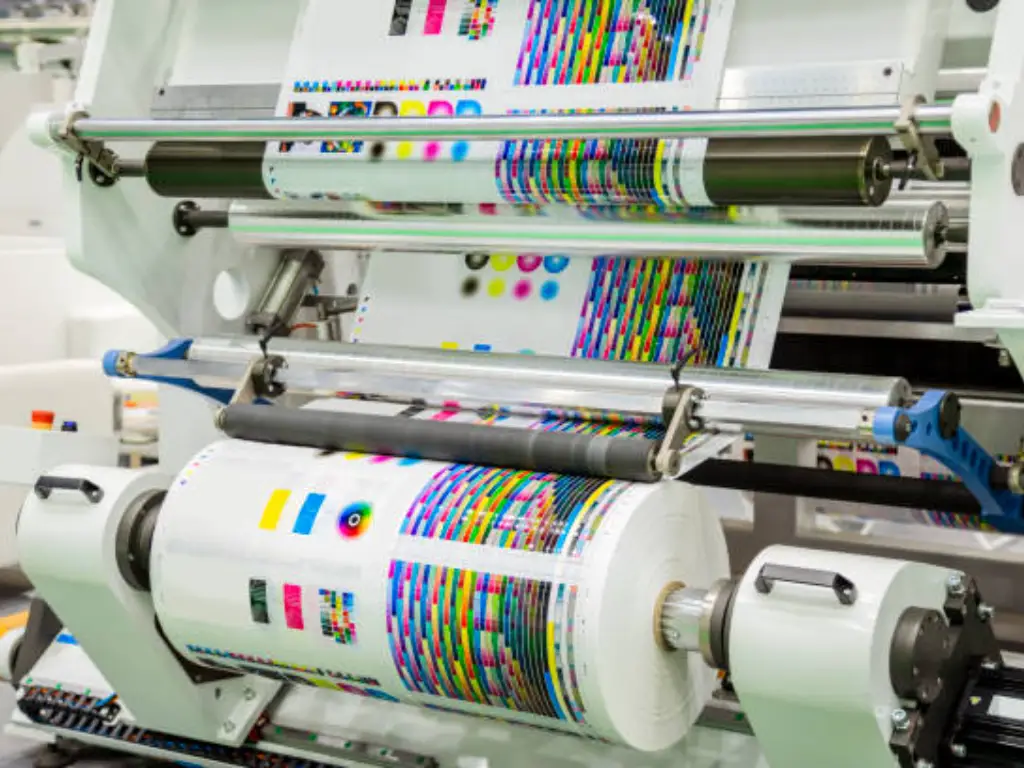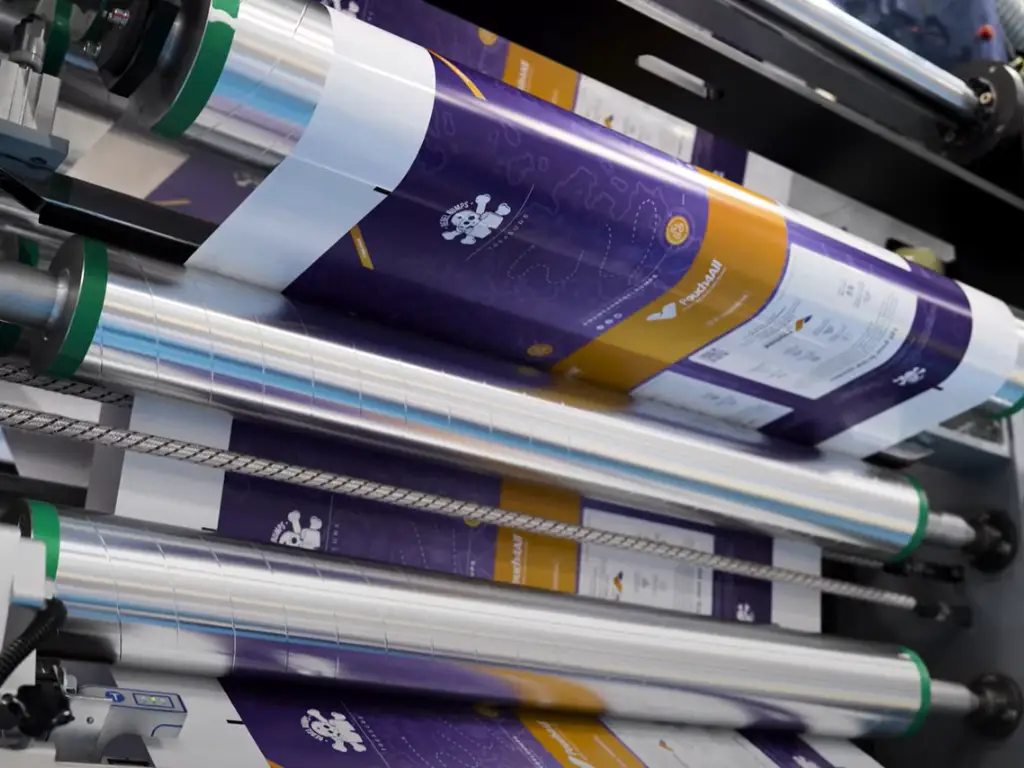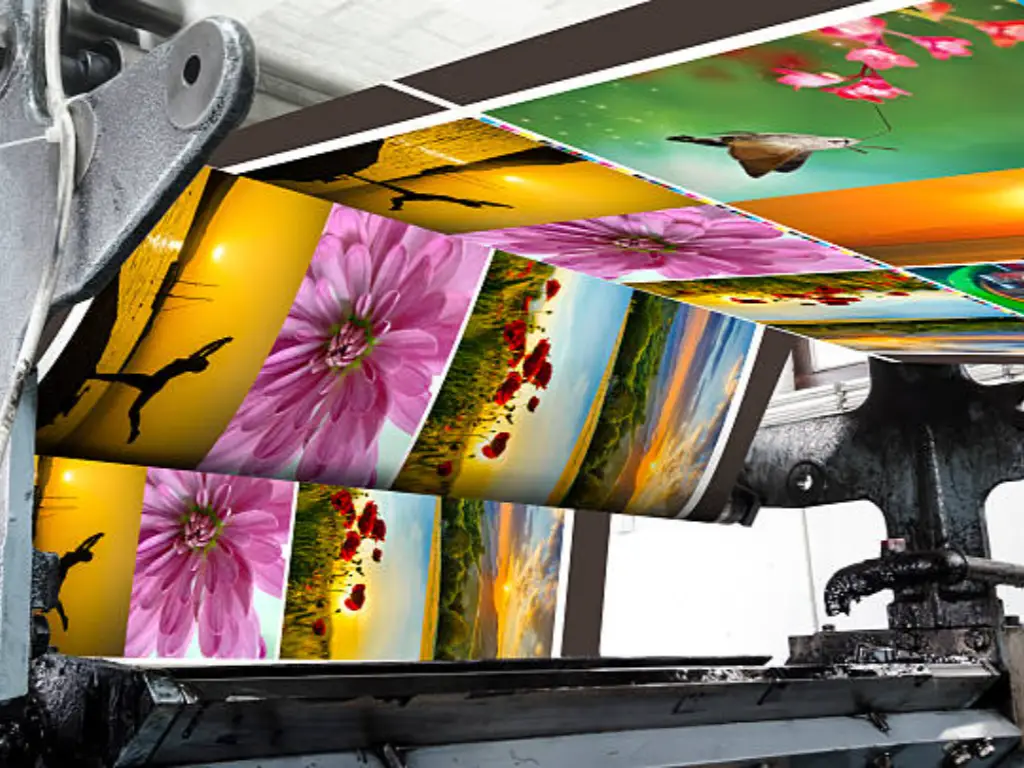Introduction
Within the competitive arena of consumer products, packaging is much more than a container; a very important interface between a brand and its customer. The printing technology used on that particular packaging is not, however, a technical decision but a strategic one, with instant ramifications on price, brand image, scale, and speed to market. When companies are dealing with the challenges of flexible packaging, there are usually only two different technologies that come out as major choices: digital printing and flexography.
Each method offers distinct advantages and is engineered to solve different manufacturing challenges. The workhorse of the industry, flexography, is known to be efficient and economical at high volumes. A more recent and radically new technology, digital printing, enables flexibility never before imagined, fast short-run capability, and customization.
Any brand manager, product developer, or procurement specialist must understand the basic differences between these technologies. This paper will be an objective, analytical paper about digital and flexographic printing. We will break down their fundamental mechanics, make a head-to-head comparison based on their key business considerations, and provide a clear guide to choosing the best approach to your particular product requirements.
Flexo vs. Digital: Understanding the Basics
Fundamentally, the two printing techniques accomplish the same objective, which is the transfer of ink to the substrate. But their mechanics are quite different, and this fact is the root of their respective merits and demerits.
Flexography (Flexo): The Power of the Plate

The flexographic printing process is a modern development of the letterpress, which is a high-speed rotary process. Its technology is based on the use of elastic photopolymer as a flexible printing plate attached to a cylinder. For each color in a design, an individual plate has to be produced by laser etching the artwork onto the plate surface, such that a raised image area remains. The first plate production accounts for a large part of the setup cost. In the flexographic printing press, a highly engraved anilox roller spins through an ink pan, picking up a controlled amount of ink within its microscopic cells. This roller then applies the ink to the areas of the printing plate still above the plate’s surface. Finally, the substrate is passed between the plate cylinder and an impression cylinder, which applies enough pressure to transfer the inked image directly onto the material. Because this whole process is rotary and runs at high speeds, flexography is extremely efficient once it is set up, so this analog plate-based production process is very well suited for long and repeat print projects.
Digital Printing: The Precision of Data

The digital printing process doesn’t use printing plates at all and instead sends a digital file (such as a PDF) directly to the press to reproduce it onto the substrate. The two most popular digital printing systems for flexible packaging are Electrophotography and Inkjet. In electrophotography, as used in the HP Indigo technology, an image is produced in latent form on a photo-imaging drum by an electric charge. The liquid toner for these image areas is charged and adhered to this image area and then transferred to a heated blanket, fusing the ink layer to the substrate for a crisp, high-quality finish. The process of inkjet printing uses fine jets or droplets of ink to be ejected from the printheads of modern inkjet printers and directly onto the surface of the material being printed. These industrial systems use a CMYK process and are often combined with additional colors to reproduce a full and vibrant color gamut at high speeds. Digital printing eliminates the need for plates, which eliminates the setup costs and drastically shortens the time it takes to get a job going, making it the better option for on-demand work and frequent design changes.
The Core Decision Factors: A Digital vs Flexo Printing Analysis
Choosing to use a specific technology requires an analysis of all the technologies relative to key business metrics. This in-depth article looks at six key factors that directly influence project cost, quality, and speed to market.
Cost Structure & Economics
The financial model is the most important differentiator. With design complexity weighing in heavily on its cost, flexography also has high up-front costs for plates and a time-consuming press make-ready process. However, once it is in operation, the per-unit cost is very low. In contrast, digital printing has almost no setup costs, resulting in huge savings on small orders. Also, its unit cost does not vary much with the amount and therefore is not a favorable option for very large volumes. This gives a “crossover point,” usually somewhere between 5,000 and 10,000 units, where flexography becomes less expensive.
Ideal Run Size
The optimal level of production is determined directly by the economic model. Flexography is the standard method for producing long, stable series. On the other hand, digital printing is the clear winner in the small-batch arena. Its cost at low volumes makes it ideal for market tests, seasonal promotions, low-volume orders, and product lines with multiple SKUs.
Print Quality & Color Reproduction
Both technologies have great results, but are better at different things. Flexography has very good matching capabilities for specific Pantone (PMS) colors. It also works very well with large sections of solid color. Digital printing, however, is unequaled in reproducing photorealistic images, complex graphics, and elaborate designs. Its exact digital controls also mean superior color uniformity from print to print and batch to batch-and re-order to re-order.

Speed & Turnaround Time
It is essential to distinguish between setup speed and production speed. Flexography has a longer setup time and can also produce a lot of waste during make-ready. However, it has a very high running speed. Digital printing has an essentially instant setup time, making this project turnaround much faster overall than offset printing, particularly when short-to-medium runs (usually 7-10 working days) are involved.
Material & Substrate Compatibility
Flexography has historically been the superior material choice due to its long history and the application of varied ink systems (water-based, solvent-based, UV-cured) to an extremely large range of substrates. But the gap is rapidly being closed by digital technology. Advances in the chemistry of inks and substrate primers mean that today’s digital presses can print most common flexible packaging materials (including PE, PET, and BOPP films, making it a viable option for a wide array of products.
Customization & Variable Data Printing (VDP)
This realm is a basic boundary. A flexographic press is an analog process that makes the same impressions each time. But digital printing also provides endless customization options through the unique capability of Variable Data Printing (VDP). Because it prints from a digital file, every single package can have elements changed. This opens up great marketing possibilities for unique QR codes, product serialization, or personalized messages.
To help these distinctions go down easier, here’s a side-by-side comparison of digital and flexographic printing across the six key factors in the following table.
| Factor | Digital Printing | Flexographic Printing |
| Cost Structure | No printing plates; stable cost per unit; most economical for short runs and small orders | Higher upfront plate and setup costs; lowest per-unit cost at large volumes |
| Ideal Run Size | Best for small batches, frequent artwork changes, or multiple SKUs | Optimized for long runs and large volumes |
| Print Quality | Excellent for intricate designs, gradients, and high-resolution graphics | Strong Pantone color matching and large solid color areas |
| Speed & Turnaround | Very fast setup time; rapid delivery for urgent or short runs | Slower setup but extremely high production speed once running |
| Material Range | Works with a wide variety of substrate materials (improving rapidly) | Handles the widest range of substrates, including specialty films and foils |
| Customization | Supports variable data, personalization, and flexible custom labels | Limited customization; identical impressions per print job |
Which Printing Method is Right for You?
With a good understanding of the technical differences, you can decide which type of printing makes the most sense for your business situation. It is helpful when determining whether to use them or not to summarize the pros and cons for your particular needs.
Choose Digital Printing if:
- ● You need speed to market a project with a tight deadline.
- ● You require multiple SKUs or design variations for many products.
- ● You are a startup or testing a new product with a low initial order quantity.
- ● Your artwork features intricate details, gradients, or high-resolution images.
- ● You want to leverage personalization with unique codes or messages.
Choose Flexographic Printing if:
- ● You have a high-volume production run for an existing product.
- ● Your primary goal is the lowest per-unit cost for large runs.
- ● Your design is very dependent on certain specific Pantone brand colors.
- ● You are using a particularly challenging substrate where a specific ink system is required.
Beyond Comparison: Choosing the Right Partner
The choice between digital and flexo printing is often made with the perception that it’s a restrictive choice. The more important issue is not choosing a technology but delivering business results. This calls for a partner with intimate familiarity with a variety of solutions to deliver the optimal solution.
At Baishen Pack, we have designed our operations around this philosophy since we were founded in 2012. Our involvement goes beyond manufacturing; it’s about tailoring a packaging solution. Our team of experienced engineers helps you select the best path of production according to your unique goals. Whether your project requires the speed and customization of our state-of-the-art HP Indigo digital presses, the volume of high-speed flexography, or the high quality of gravure, our in-house suite promises nothing less.
This means you can design and produce a new product with a fast digital run in as little as 7-10 days, efficiently scale to low-cost flexo for high volumes, and incorporate sophisticated custom features with a 24-hour design proof. Making a versatile partner changes a technical decision into a branded strategic asset.

Considering a Third Option: Gravure Printing
Although the digital vs flexo printing discussion is usually the focus, gravure printing is another printing process worth mentioning – particularly in very large-scale packaging projects.
Gravure uses engraved cylinders for applying the ink directly to the substrate. This printing technique is noted for its excellent image consistency, color intensity, and durability, and is therefore suitable for high-quality product labels or packaging where longer life finishes are necessary. For global brands making billions of pieces, gravure at scale is efficient enough to offset the high initial investment.
That being said, gravure has definite limits. The expense of preparing the cylinders and the longer setup time make this type of writing not well-suited for short print runs or projects where the artwork changes regularly. Each design change means a new cylinder, and that can get pricey. As such, it is generally only practical for applications in which very large numbers of runs or very detailed graphics are needed.
In practice, gravure does not take the place of flexographic printing or digital printing technology for most businesses. Instead, it should remind us that there are several types of printing within the industry with different costs, speed, and quality trade-offs depending upon the scale and objectives of the project.
The Future: Hybrid Printing & Sustainability
The packaging industry is constantly evolving. Two key trends are shaping its future: technological convergence and sustainability.
Hybrid Printing: The digital and flexo lines are starting to blur with the emergence of hybrid presses. These advanced machines have the best of both worlds in one pass. For example, a hybrid press may have flexo stands that lay down an affordable white base coat or a brand color key, then have an inline digital inkjet head for printing variable data and intricate graphics. Both cost-effective and fully customizable, this is a huge leap in print production.
Sustainability: With consumer demand and corporate responsibility driving the push for sustainable packaging, both materials and printing processes are considered vital. Within the industry, we are seeing an increase in recyclable mono-material structures, compostable films, and bio-based plastics. Both printing technologies are responding to this trend; digital printing is by definition a setup-waste-limited process, and flexography is making significant strides with water-based and energy-curable inks that reduce its environmental impact. These simultaneous trends are offering brands more channels to achieve their environmental objectives.

Let’s Build Your Perfect Packaging Solution
Selecting between digital, flexo, or gravure is a crucial step, but it is part of a greater path. Your product is special; your packaging solution should be special. The correct answer is a careful function of your design, budget, volume, and market strategy.
Instead of having to make this complicated decision on your own, we want you to have a conversation. Let our team of engineers and designers with more than 10 years of focused experience in flexible packaging assist you in navigating the options available. We will collaborate to create a solution that not only safeguards your product and delights your customers but also perfectly aligns with your business goals.
Your packaging is your guarantee to the consumer. Let’s cooperate to make it very special.


